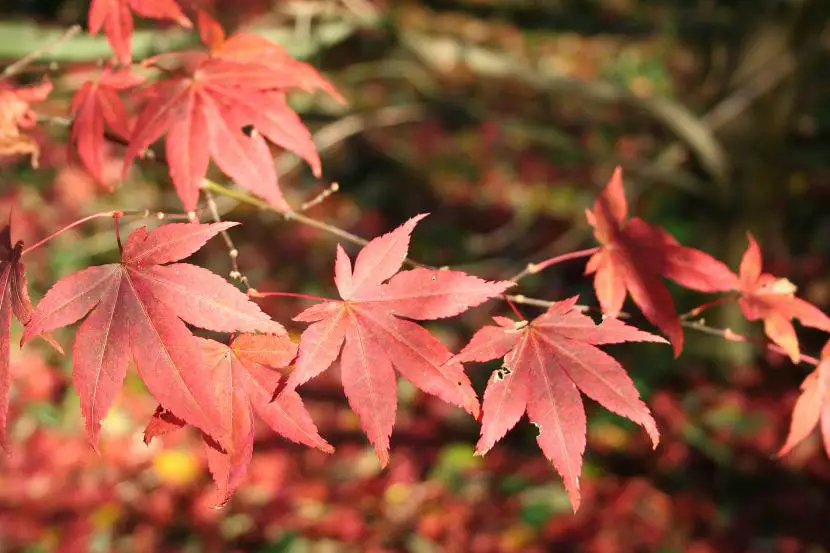
It belongs to a group of trees that I like to call »garden jewels». And the fact is that its leaves are so decorative, they have such an elegant, oriental bearing, that anyone who sees one for the first time will fall in love with these plants.
Today I’m going to talk to you about purple mapleof which its precious red palmate leaves and its reduced height stand out, thus making it an excellent candidate for dressing small gardens.

The purple maple, scientifically known as Maple Palm »Dark Purple»is one of the deciduous tree species originating from the Asian continent, specifically from China, and especially from Japan, where it is very common to find them in both botanical and private gardens. With a height of about 4m, you can have both in pot like in the gardenin which case we will make sure that the soil has a low pH, between 4 and 6.
It has a relatively slow growth. Why do I say “relatively”? Well, it turns out that until a few months ago I believed that it had a rather medium-fast growth in cool climates, but slow in those where the temperatures were higher. But the reality is that it can also grow at a remarkable speed in climates such as the Mediterranean, as long as you have a very porous substrateas it could be 70% akadama and 30% kiryuzuna, or river sand with volcanic clay in the same proportions. In this way, the roots will remain perfectly oxygenated, facilitating that the water – from rain, from osmosis or mixed with a little natural lemon juice – that they absorb through irrigation reaches the leaves without difficulty, which will not do more to increase in number.

We will place our maple in sunny expositions if we live in cool climates, or in those where they get the sun for a few hours a day if the summer is very hot. By the way, don’t worry about high temperatures: My Japanese maples are enduring the high temperatures -we have reached 38º- of this heat wave in a place where the sun hits them directly in the mornings. Of course, it is important that they always have the substrate moist, since otherwise the tips of the leaves could dry out.
Take the opportunity to pay with a specific fertilizer for acid plantsfollowing the recommendations on the package, throughout the growing season.
If you have doubts, get in contact with us.

